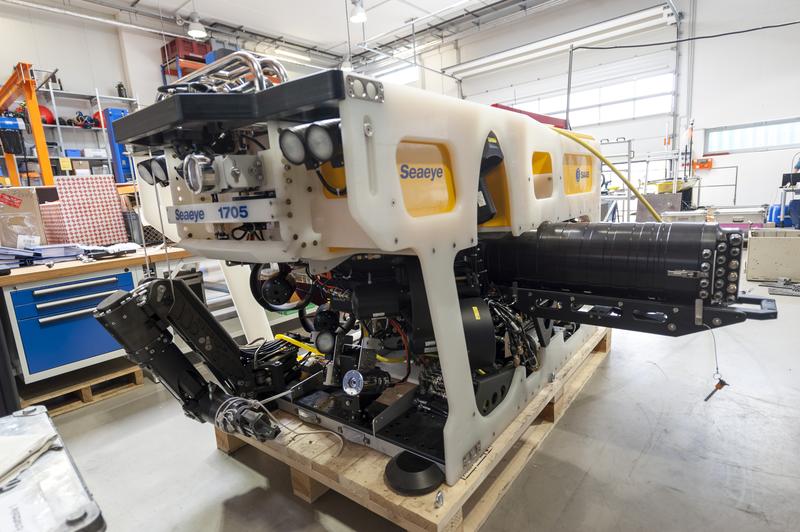

The diving vehicle MARUM-SQUID
V. Diekamp, MARUM
On Monday, July 13th, the Center for Marine Environmental Sciences in Bremen/Germany received its new submersible, the MARUM-SQUID. The remotely operated vehicle can be deployed down to 2,000 meters.
In the near future it will prove invaluable in investigations of such deep-sea phenomena as cold-water corals and gas seeps, as well as hydrothermal vents on the sea floor, the so-called black and white smokers. The vehicle is equipped with a still camera and a high-resolution video camera.
Its hydraulically powered multi-function manipulator, made of stainless steel, is able to collect samples as heavy as 68 kilograms. – MARUM-SQUID nicely complements the institute’s existing fleet of autonomous and remotely operated diving vehicles.
Basic facts MARUM-SQUID:
Length: 2.10 m
Height: 1.17 m
Width: 1.16 m
Weight: 1,200 kg
Chassis:Polypropylene, stainless steel
Propulsion: 11 thrusters
Forward speed: 3.5 knots
Depth rating: 2,000 m
Payload: 100 kg
Manipulator: 7 functions, 1.5 m reach,
Lift at full extension: 68 kg, max. lift: 250 kg
Further Informationen / Interviews / Photos:
Albert Gerdes
MARUM Public Relations
Tel.: +49 – 421 218 65540
Email: agerdes@marum.de















